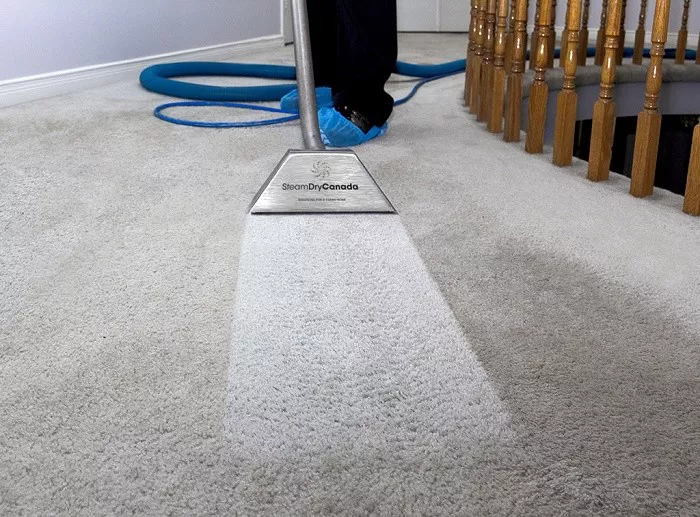When it comes to maintaining clean floors, choosing the right cleaning tool is essential. Carpet sweepers and vacuums are two popular options, each with its own set of advantages and drawbacks. This article aims to explore the differences between carpet sweepers and vacuums, helping users make an informed decision based on their specific cleaning needs and preferences.
Overview of Carpet Sweepers and Vacuums
Carpet sweepers and vacuums are both designed to remove dirt, debris, and allergens from floors, but they operate differently:
1. Carpet Sweepers: Manual tools equipped with rotating brushes that sweep debris into a built-in dustpan. They are lightweight, portable, and require no electricity.
2. Vacuums: Electrically powered devices that use suction to lift dirt and debris from floors and carpets. They come in various types, including upright, canister, stick, handheld, and robotic models, offering a wide range of features and capabilities.
How Carpet Sweepers Work
Mechanical Operation
Carpet sweepers utilize a manual brush mechanism that rotates as the sweeper is pushed across the floor. The brushes capture dirt and debris, depositing it into a removable dustpan or container.
No Electricity Required
One of the primary advantages of carpet sweepers is their lack of reliance on electricity. They operate solely through mechanical action, making them suitable for use anywhere, even in areas without power outlets.
Quiet Operation
Another benefit of carpet sweepers is their quiet operation. Since they don’t use motors or suction, they produce minimal noise, making them ideal for use in noise-sensitive environments or during quiet hours.
How Vacuums Work
Electric Operation
Vacuums utilize electric motors to create suction, drawing dirt and debris into a dustbin or bag. The suction power varies depending on the model and can be adjusted to suit different flooring types and cleaning needs.
Variety of Types
Vacuums come in various types to accommodate different preferences and cleaning requirements. From traditional upright and canister vacuums to modern stick, handheld, and robotic models, there’s a vacuum type for every situation.
Additional Features
Many vacuums come with additional features such as HEPA filters for trapping allergens, specialized attachments for different surfaces, and adjustable suction settings for versatile cleaning.
Performance Comparison
Effectiveness on Different Surfaces
1. Carpet Sweepers: Best suited for light cleaning on low-pile carpets and rugs, effectively picking up surface debris.
2. Vacuums: More versatile and powerful, capable of deep cleaning carpets, including high-pile varieties, and effectively handling hard floors.
Handling Pet Hair
1. Carpet Sweepers: Limited effectiveness with pet hair, especially embedded hair.
2. Vacuums: Generally more effective, particularly models equipped with pet-specific attachments and features.
Dust and Allergens
1. Carpet Sweepers: May not capture fine dust and allergens as effectively as vacuums.
2. Vacuums: Often equipped with HEPA filters to trap dust, allergens, and microscopic particles, providing cleaner air.
Convenience and Usability
Ease of Use
1. Carpet Sweepers: Lightweight, easy to maneuver, and simple to empty.
2. Vacuums: Can be heavier and bulkier, but many modern designs focus on improved ergonomics for ease of use.
Maintenance
1. Carpet Sweepers: Minimal maintenance required, usually just emptying the dirt container and cleaning brushes.
2. Vacuums: Require regular filter changes, bag replacements (for bagged models), and occasional maintenance of belts and brushes.
Storage
1. Carpet Sweepers: Compact and easy to store, requiring minimal space.
2. Vacuums: Often larger and may require more storage space, particularly upright and canister models.
Cost Considerations
Initial Cost
1. Carpet Sweepers: Generally less expensive upfront than vacuums.
2. Vacuums: Offer a wider price range, with some models being significantly more expensive due to advanced features and capabilities.
Long-Term Costs
1. Carpet Sweepers: Low long-term costs due to minimal maintenance and no electricity consumption.
2. Vacuums: Potentially higher long-term costs due to replacement parts, filters, bags, and electricity consumption.
Environmental Impact
Energy Consumption
1. Carpet Sweepers: Environmentally friendly as they consume no electricity during operation.
2. Vacuums: Use electricity, although energy-efficient models are available to reduce environmental impact.
Waste Generation
1. Carpet Sweepers: Generate minimal waste during operation.
2. Vacuums: Bagged models generate waste from disposable bags; bagless models reduce waste but require periodic filter replacements.
Situational Recommendations
Best for Quick Cleanups
Carpet sweepers are ideal for quick, daily cleanups and small spaces where convenience and portability are paramount.
Best for Deep Cleaning
Vacuums are better suited for thorough cleaning and larger areas, particularly where deep cleaning is needed, such as high-traffic areas and homes with pets.
Noise-Sensitive Environments
Carpet sweepers are preferable due to their silent operation, making them suitable for use in noise-sensitive environments or during quiet hours.
Areas with Heavy Foot Traffic and Pets
Vacuums are more effective in handling dirt, debris, and pet hair in these situations, providing deeper cleaning and better allergen removal.
User Testimonials and Reviews
Real-life experiences from users who have used both carpet sweepers and vacuums can provide valuable insights into the performance, convenience, and satisfaction with each cleaning tool.
Conclusion
In summary, both carpet sweepers and vacuums have their unique strengths and weaknesses. The choice between the two depends on the user’s specific cleaning needs, preferences, and budget. While carpet sweepers excel in portability, quiet operation, and low maintenance, vacuums offer greater versatility, power, and effectiveness, particularly for deep cleaning and handling pet hair. Ultimately, selecting the right cleaning tool is a matter of balancing these factors to achieve the desired cleaning results.

